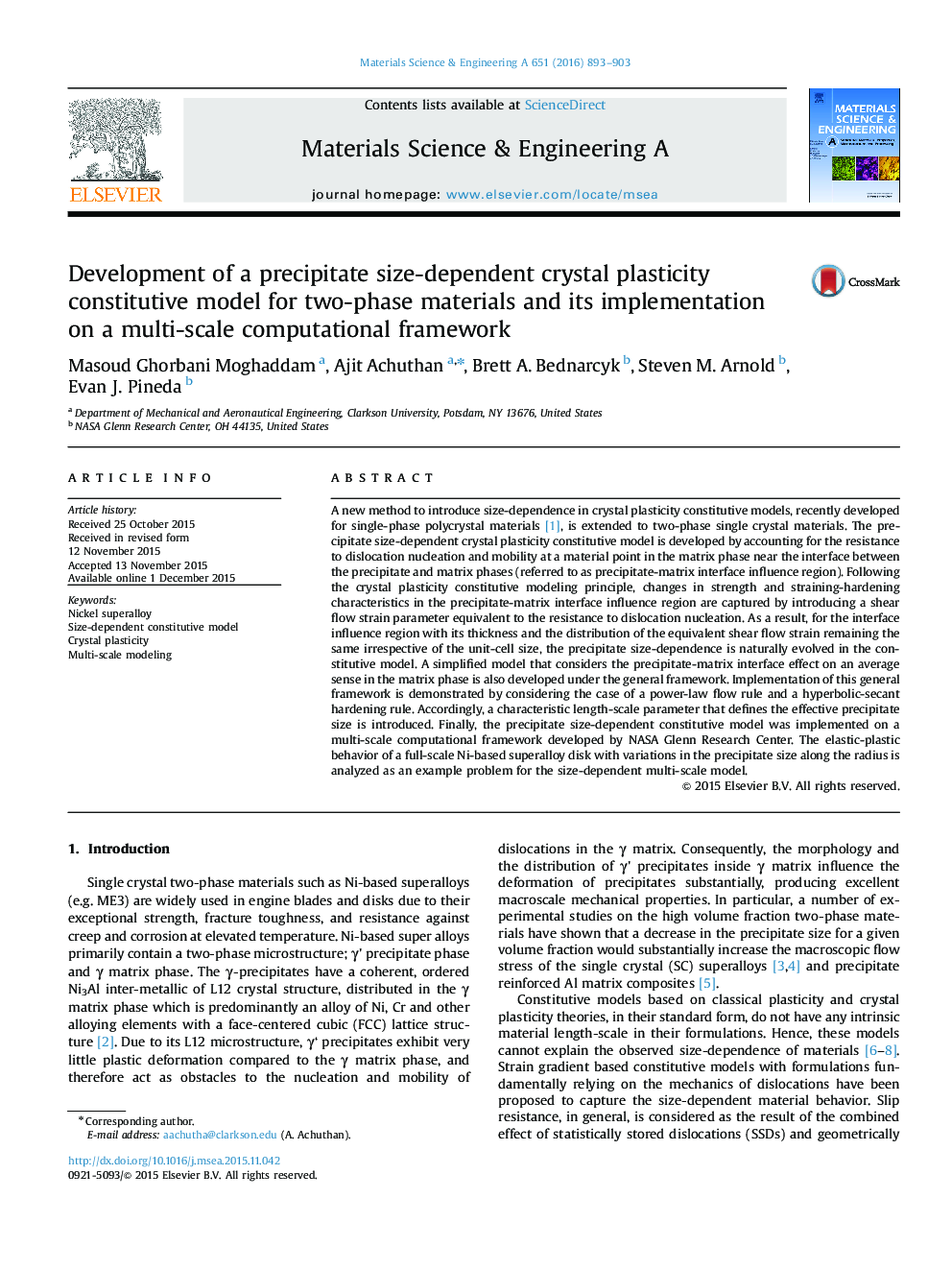| Article ID | Journal | Published Year | Pages | File Type |
|---|---|---|---|---|
| 7976328 | Materials Science and Engineering: A | 2016 | 11 Pages |
Abstract
A new method to introduce size-dependence in crystal plasticity constitutive models, recently developed for single-phase polycrystal materials [1], is extended to two-phase single crystal materials. The precipitate size-dependent crystal plasticity constitutive model is developed by accounting for the resistance to dislocation nucleation and mobility at a material point in the matrix phase near the interface between the precipitate and matrix phases (referred to as precipitate-matrix interface influence region). Following the crystal plasticity constitutive modeling principle, changes in strength and straining-hardening characteristics in the precipitate-matrix interface influence region are captured by introducing a shear flow strain parameter equivalent to the resistance to dislocation nucleation. As a result, for the interface influence region with its thickness and the distribution of the equivalent shear flow strain remaining the same irrespective of the unit-cell size, the precipitate size-dependence is naturally evolved in the constitutive model. A simplified model that considers the precipitate-matrix interface effect on an average sense in the matrix phase is also developed under the general framework. Implementation of this general framework is demonstrated by considering the case of a power-law flow rule and a hyperbolic-secant hardening rule. Accordingly, a characteristic length-scale parameter that defines the effective precipitate size is introduced. Finally, the precipitate size-dependent constitutive model was implemented on a multi-scale computational framework developed by NASA Glenn Research Center. The elastic-plastic behavior of a full-scale Ni-based superalloy disk with variations in the precipitate size along the radius is analyzed as an example problem for the size-dependent multi-scale model.
Related Topics
Physical Sciences and Engineering
Materials Science
Materials Science (General)
Authors
Masoud Ghorbani Moghaddam, Ajit Achuthan, Brett A. Bednarcyk, Steven M. Arnold, Evan J. Pineda,
